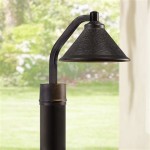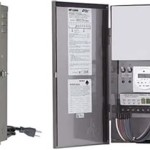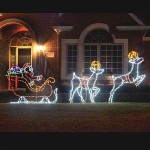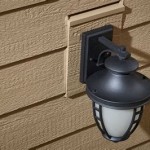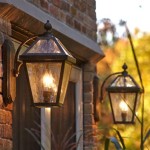Difference Between Indoor and Outdoor LED Lights
LED lighting has become increasingly popular due to its energy efficiency, long lifespan, and versatility. However, when choosing LED lights, it is crucial to consider their intended use, as both indoor and outdoor applications require different specifications and considerations. This article delves into the key differences between indoor and outdoor LED lights, providing a comprehensive understanding of their unique features and applications.
1. Weather Resistance and Durability
Outdoor LED lights must withstand harsh weather conditions such as rain, snow, extreme temperatures, and UV radiation. Therefore, they are designed with high levels of weather resistance and durability. Outdoor LED lights are typically rated with an Ingress Protection (IP) code, which indicates their resistance to dust, water, and other external elements. For example, an IP65 rating signifies that the light fixture is dustproof and protected against water jets from any direction.
Conversely, indoor LED lights are not exposed to the same environmental rigors. Their primary focus is on aesthetics, energy efficiency, and providing adequate illumination for indoor spaces. While they may be resistant to minor spills or dust, they do not require the same level of weatherproof protection as outdoor lights.
2. Lumens and Color Temperature
The amount of light emitted by an LED bulb is measured in lumens. For outdoor lighting, higher lumen outputs are often required to illuminate larger areas and provide adequate visibility. Moreover, outdoor LED lights often utilize different color temperatures to achieve specific lighting effects. Warm white or cool white tones might be used for residential spaces, while neutral white tones might be preferred for security lighting.
Indoor LED lights typically require lower lumen outputs due to the smaller spaces they illuminate. Color temperature preferences for indoor lighting vary depending on the room's purpose. For example, warm white tones might be preferred for living rooms and bedrooms to create a cozy atmosphere, while cool white tones might be better suited for kitchens and offices, promoting alertness and productivity.
3. Power Supply and Installation
Outdoor LED lights may require a different power supply than their indoor counterparts. Outdoor applications often utilize low voltage transformers to safely deliver power to the lights. These transformers are typically installed in waterproof enclosures and must be properly grounded to prevent electrical shocks.
Indoor LED lights typically operate on standard household voltage and can be easily plugged into an outlet or wired into the existing electrical system. Installation procedures for outdoor LED lights often involve mounting the fixtures onto surfaces, such as walls, poles, or trees. This may require special tools and expertise, while indoor LED installations are typically more straightforward, involving simple screw-in bulbs or fixtures that clip into place.
4. Placement and Purpose
Outdoor LED lights are typically placed in areas that require illumination for safety, security, or aesthetic purposes. This includes landscaping, walkways, driveways, and building exteriors. Outdoor lighting can highlight architectural features, create ambiance, and deter crime.
Indoor LED lights are used in a wide range of spaces, including living rooms, bedrooms, kitchens, bathrooms, offices, and retail stores. Their purpose is to provide adequate illumination for everyday tasks and activities, create a comfortable atmosphere, and enhance the overall aesthetic.
5. Additional Features
Outdoor LED lights may offer additional features such as motion sensors, dimming capabilities, and remote control options. Motion sensors provide energy-efficient lighting by turning lights on only when someone is present, while dimming capabilities allow for adjustments to light output based on personal preference. Remote control options allow for the convenient operation and scheduling of lighting from a distance.
Indoor LED lights may also incorporate features like smart home integration, color-changing capabilities, and voice control. Smart home integration allows for seamless control of the lights through a smartphone app or voice assistant, while color-changing capabilities provide a wide range of options for mood lighting and personalization. Voice control offers hands-free operation for added convenience.
Ultimately, the choice between indoor and outdoor LED lights depends on the specific application and requirements. By carefully considering the factors outlined above, users can select the appropriate LED lighting solution for their needs and enjoy the benefits of energy efficiency, durability, and versatility.
What Is The Difference Between Indoor And Outdoor Lighting Bbier Ledlighting Quora
What Is The Difference Between Indoor And Outdoor Lighting Bbier Ledlighting Quora

What Is The Difference Between Indoor And Outdoor Led Strip Lights Lighting Portal

Differences Between Indoor And Outdoor Lighting The Mamma Fairy

Indoor Vs Outdoor Lighting Are They Interchangeable Kirby Electric

Can You Use Indoor Led Flood Lights Outdoor Lighting Info

Can You Use Indoor Led Flood Lights Outdoor Lighting Info

Good Earth Lighting Indoor Outdoor Smart Wi Fi Strip Light

Xtreme Lit 16 4ft Indoor Outdoor Multicolor And Multi White Led Light Strip Weather Resistant Com

Original Indoor And Outdoor Led Lights In Owerri Home Accessories Hex Technologies Jiji Ng
